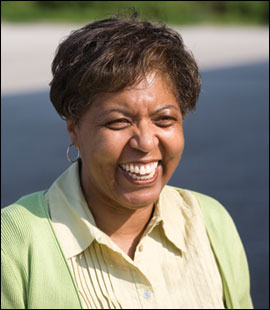|
"It looks like it's already planned," she objects. "We only have a couple of people from the watershed here. Had we known this [would be discussed], we could have had a huge crowd.... That is what should have happened."
The problem isn't the plan. Jessica Keller, the Planning Division Chief for the DOT in Baltimore, proposes putting the money into greening efforts in the area near the MARC train, where the city is already investing a hefty sum. Keller's plan would leverage the impact of a relatively small dollar amount.
The problem is the process. The decision on where to spend the money seems to be a done-deal - and a deal done when many of the stakeholders are not in the room, especially those representing the affected neighborhoods of Union Square and New Southwest. "I believe in teams, in hearing people, in buy-in," says Inez Robb, who represents the watershed from the neighborhood of Sandtown-Winchester. Without that buy-in, the best-laid plans will seldom work, whether it's cleaning old stables or building new greenways.
Community plans have a better shot at success when people like Robb buy in. Soon after she bought her first home in Sandtown-Winchester, on a newly renovated block in an otherwise troubled neighborhood, she joined the board of her condominium association and soon became its president. It is "not a thankful job," she says, but she's served faithfully for 17 years. "I'm a committed person," she says. "That's with everything. If I say I'm going to do it, I'll do it."
Robb's work with her condo board spawned a deeper involvement in community issues. She now serves on at least five different neighborhood or community advisory groups, including the Watershed 263 Stakeholder's Advisory Council. That's in addition to her day job as an IT specialist for the Social Security Administration in Woodlawn, where she's worked for 41 years.
But it is not just about doing it herself. It's about building capacity, she says. "I like empowering, sharing what I know to help you grow...I'm there with you 110 percent, but you need to do it."
True to character, Robb takes her commitment to Watershed 263 seriously. She sees communication and education as essential to success. "Those that are aware of the watershed and make the connection between greening, renovated lots, [Baltimore] Harbor, and the Bay, I think they love it.... But [with water] being underground, we don't often think about it." She says it is hard for people to make the link between eating crabs from the Bay and trash on the streets of Baltimore.
Starting the construction of the long-anticipated greenway project in Watershed 263 offers an exciting opportunity for the project — Robb
|




![[Maryland Sea Grant]](/GIFs/h_footer_mdsg.gif)